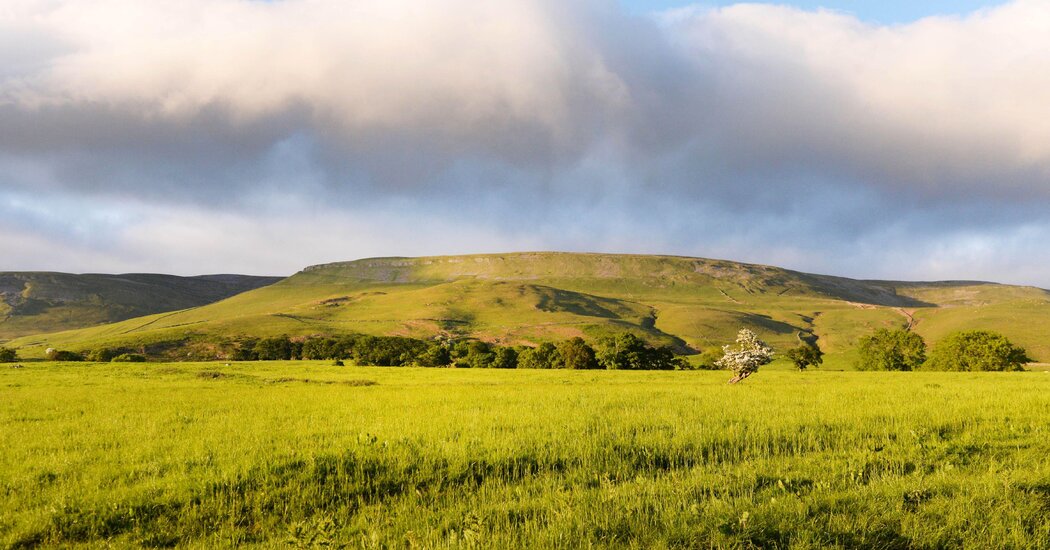
HELM, by Sarah Hall
We name hurricanes and wildfires all the time, but only in rare cases do we give names to winds. Named winds are those so integral to a place that they’ve become part of its culture — think of Le Mistral in France or the Harmattan in West Africa. Where I live, the nearest named winds are the Santa Anas of Southern California that blow toward the coast off the slopes of the Sierra Nevada. Those “devil winds” are said to foment uncanny, restless moods and erratic behavior; they “curl your hair and make your nerves jump and your skin itch,” as Raymond Chandler wrote.
In the whole of the United Kingdom there’s only one named wind, in Cumbria. Sarah Hall’s novel “Helm” is the story of that eponymous wind, mischievously personified over centuries as a force both childlike and world-weary, and woven into the lives of the protagonists. Hall, a Cumbrian native who’s twice been nominated for the Booker Prize, grew up with the wind and has been writing about it, as she’s said in interviews, for 20 years.
This inventive, ambitious, often witty storm system of a novel spans centuries, from the late Neolithic period to the Anthropocene, with chapters from the different eras woven into each other as they move forward. Every thread tells the story of its protagonist’s relationship to Helm, amid personal dramas with family and society.
The saga begins with a woman named NaNay, a seer living thousands of years ago. For her the wind is called Halron, a force of power both respected and feared. NaNay scars herself in a face-off with Helm and then devotes her life to the finding of a “magstone” she’s foreseen — likely the 12-foot sandstone now known as Long Meg that still stands in a famous Stonehenge-like circle in Penrith.
From NaNay the story shifts to a disfigured, malevolent priest in the time of King John, bent on dragging a cross to a mountaintop in defiance of Helm. From there we accelerate to a Victorian engineer named Thomas Bodger eager to measure the wind with his “revelation machine”; then to a retired pilot flying data-collection flights in the 1980s; and eventually to a scientist of our own moment, studying airborne plastics at an isolated field station.
Historical elements and fragments of other accounts are woven into the fabric as well: We encounter various found artifacts; a wife in the 18th century whose tyrannical husband is intent on destroying the stone circle; and a comedic attempted-murder trial in the 1920s in which the accused is a practitioner of herbalism and astrology and keeps a pine marten as a pet.
Hall is both playful and serious, bringing everyday warmth and droll humor to substantial ideas. In “Helm,” she commands an impressive range of idioms — Michael Lang, the medieval, slaveholding priest, is as credible as Jude the pilot, whom we first meet having soon-to-be-frustrated sex with his wife. Janni, a “touched” free-spirit girl who plays and talks with Helm, is as vivid as Dr. Selima Sutar, who researches pollution in Helm’s redoubt and is harassed by science-denying end times believers.
What “Helm” evokes with such complexity and ruefulness is an arc of human communion not only with a weather phenomenon but with all of nature. Over time, in the novel as in the history of the West, Earth-centered religions are displaced by patriarchal and Christian belief systems. We witness the decline of paganism, then of the faith that conquered it, along with the rise of machines; we observe the build out of the Industrial Revolution, the tension between Enlightenment rationalism and Romantic nostalgia for the wild, the weakening of people’s ancient spiritual bonds with their landscape and its tempers. It’s not a coincidence that, in this narrative, female characters tend to be associated with the natural and mystical, men with the quantitative, the technological, and the will to dominate.
We may be watching a long tragedy unfold in the alienation of our kind from the places we belong to, and the seriousness of this rupture is palpable in “Helm.” But Hall salts her solemn banquet with the comedy that’s inextricable from mortal life — or from English life, anyway. “As I was nearing the end of my search,” testifies a constable against an herbalist accused of poisoning in 1926, “the defendant made a sort of huffing and quacking sound like this [witness demonstrates] which I believe was a signal of some sort … and what I thought was a cat or a large ferret or one of those German fashion dogs came out of it and went for my ankle. Right viciously. Teeth like Gillettes.”
Despite the inexorability of our fall and the precarious future of Helm in the 21st century, with the Gulf Stream and polar air mass under threat from climate change, NaNay the seer and Selima the scientist have something in common. Perhaps a love of nature and a love of the science that seeks to understand it don’t have to be so far apart.
HELM | By Sarah Hall | Mariner Books | 349 pp. | $24
The post A Moving, Urgent Novel About … the Wind? Yes, the Wind. appeared first on New York Times.



